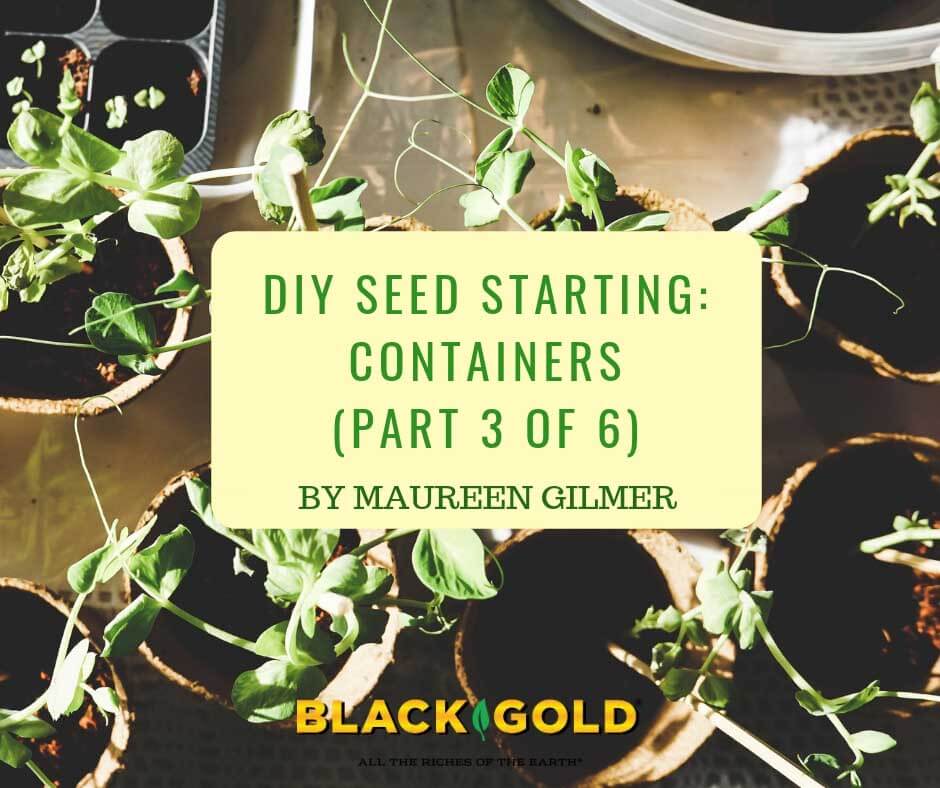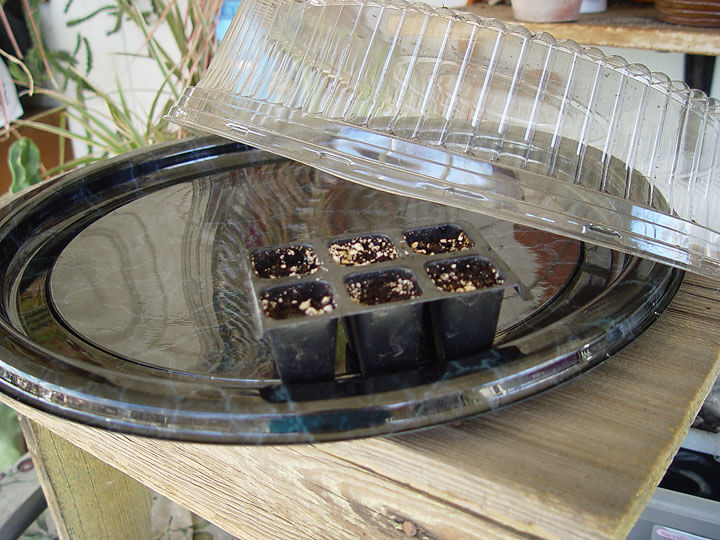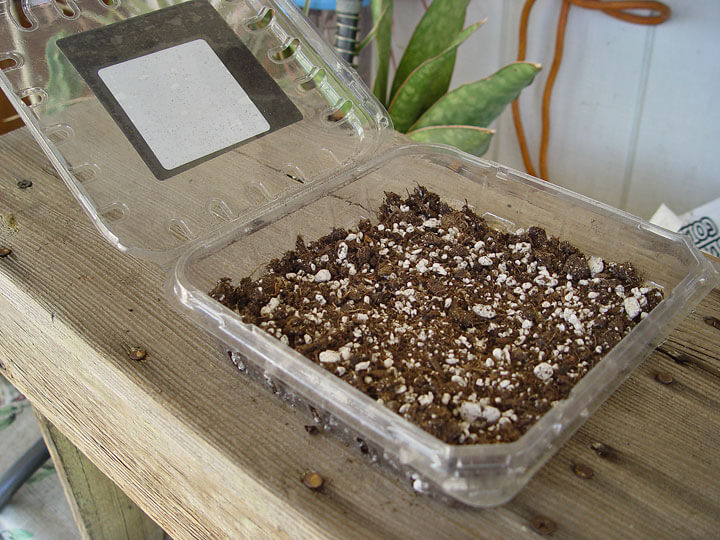
Gardeners that start seeds at home have lots of containers to choose from. You can buy seed-starting flat kits, peat pots, reused containers, or even make seedling soil blocks. Some are more costly, while others allow you to grow more for less. My preference is to germinate seed in recycled containers to save your money and reuse plastic waste. Here is what to look for in good containers for seed starting.
Provide Cover
The biggest challenge when germinating seed is keeping the soil evenly moist, but not wet. Good cover with clear or translucent plastic tops ensures surface moisture. This is especially important in dry climates where evaporation rates are

much higher. These regions are the hardest places to grow anything from seed. (In more humid climates cover is not always required.) If you let pots go dry for just a day or two, tender young sprouts may wither. If you’re busy with the kids or gone at work all day, you won’t be able to rescue wilted seedlings. If they suffer long enough, they will die. In the earlier stages of seed germination and growth, covers provide a safety net.
Seed Starting Containers
One of the most common seed-starting mistakes is sowing seed directly into deeper pots. In some cases, the soil surface can quickly dry out while deeper down it can remain wet, even saturated. When you rewet the surface soil where seeds lie, you risk further saturation deeper down, which can stimulate fungal disease or undesirable saturated soil conditions. Once a seedling’s roots grow downward, this can cause trouble.
For this reason, accomplished gardeners germinate their seed in smaller containers. If you don’t have seedling flats, recycled clear plastic fruit, vegetable, or take-out food containers

with tops are ideal. The ability to close the top greatly reduces the rate of surface evaporation, thereby maintaining moist conditions without the need to apply more water. If lids are not available, plastic wrap can do the job. Just make sure there are holes in the top and bottom for oxygen and free drainage.
For larger projects, consider using purchased, lidded nursery flats with cell packs. For smaller plants, choose flats with smaller cells and for larger plants go for larger cells.
The goal of all these choices is to turn containers into miniature greenhouses where seeds are kept warm, stay evenly moist, and will be quick to germinate. Within this environment, control temperature and moisture levels by opening and closing the lid all or part way. (Click here for a vegetable seed-starting temperature chart.) This allows more or less air exchange during periods of wet or dry weather.
Fill the bottom of containers or cell packs with a few inches of pre-moistened, fresh Black Gold Seedling Mix, which is OMRI Listed for organic growing. Into this sow your seed. Once up and growing, each seedling will soon be transplanted into its own growing container.

Upgrading Containers
As seedlings grow, they often need more space to reach full planting size. For this second stage use six-packs or four-inch pots and Black Gold Natural & Organic Potting Soil. Larger pots will be needed for larger plants, such as tomatoes or zinnias. The transplanting process is explained in part six of this series (see the link below).
The most important part of starting the garden indoors is your choice of containers. The right one makes this easy to do, but the wrong choice can leave you perpetually struggling to keep moisture and warmth at optimal levels. Yes, it may be easier to get started with an expensive growing seed-starting kit, but you’ll pay for it.
Why not reuse free plastic containers from salad boxes to yogurt cups to help the environment? Or use all those containers you saved from previous season’s nursery-grown bedding plants. Clean them up in some hot water and soap, and they will be good to go. There’s no need to spend your money on anything except quality seed, seedling mix, and organic potting soil to get your garden off to a flying start indoors this year.
READ MORE ARTICLES FROM THIS SERIES…
- Start Vegetable Seed Indoors Early
- DIY Seed Starting: Seed Packets (Part 1 of 6)
- DIY Seed Starting: Damping Off Prevention (Part 2 of 6):
- DIY Seed Starting: Containers (Part 3 of 6)
- DIY Seed Starting: Proper Sowing (Part 4 of 6)
- DIY Seed Starting: Watering (Part 5 of 6)
- DIY Seed Starting: Transplanting Seedlings (Part 6 of 6)

